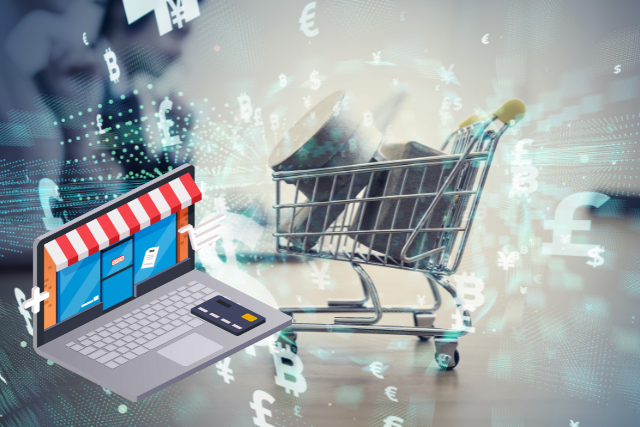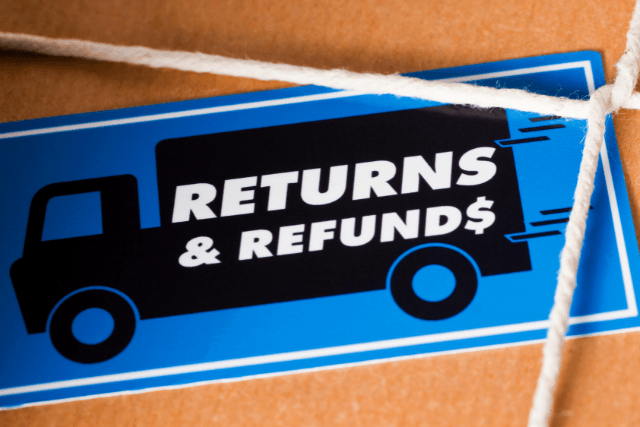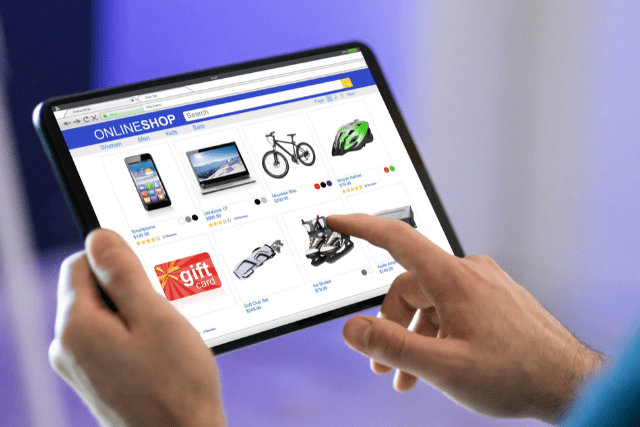Want to capture your customers’ attention right where they are? Geomarketing allows e-commerce businesses to connect with local audiences by using location data to deliver highly personalized marketing campaigns. By understanding where your customers are and what they want, you can create targeted promotions, boost engagement, and drive more sales—all while building stronger community ties.
In this guide, we’ll show you how to use geomarketing effectively to enhance your e-commerce strategy. Learn how to analyze location trends, craft targeted ads, and implement location-based promotions that resonate with your audience.
Key Takeaways
- Utilize location data to create personalized marketing campaigns that resonate with local audiences and their preferences.
- Analyze customer location trends to optimize inventory management and tailor product recommendations for specific regions.
- Implement location-based promotions, such as exclusive discounts and geo-fencing alerts, to drive engagement and store visits.
- Leverage geo-targeted social media advertising and local influencers to enhance community connection and expand brand reach.
- Employ real-time analytics to track promotion effectiveness and adjust strategies based on customer behavior and foot traffic patterns.
Understanding Geomarketing Basics
Geomarketing is a powerful tool that combines location data with marketing strategies to transform how businesses connect with their customers. By using insights based on where people are, you can craft marketing efforts that directly cater to their needs and preferences. Imagine not just knowing who your customers are but also where they are and what they desire.
To get started, understand the value of location data. This data can be collected from platforms like Facebook, Twitter, and GPS services. It provides a clearer picture of your target audience and helps identify trends unique to different regions.
Armed with these insights, you can create campaigns that are more appealing to local customers. This might mean adapting your product offerings or fine-tuning your ads to reflect local tastes. Doing so enables you to make informed decisions that enhance customer engagement.
In essence, geomarketing is about more than just knowing where your customers are—it’s about understanding their needs and preferences. By embracing this approach, you can build stronger connections with your audience, fostering loyalty and increasing sales in your online business.
Importance of Local Data
Location data is crucial for your e-commerce strategy. By leveraging local data, you gain real insights into what your customers prefer and how they behave, allowing you to create marketing campaigns that truly resonate with local audiences.
With local data, you can enhance your product offerings by adjusting inventory to match regional tastes or running promotions on items that appeal to specific areas. This data-driven approach helps you make smarter business decisions.
Local data also enables you to identify gaps in the market. By understanding what’s missing in your area, you can capitalize on opportunities that competitors might overlook. You’re not just selling products; you’re building a community around your brand.
Ultimately, using local data goes beyond driving sales; it’s about fostering relationships and loyalty. When customers feel understood and valued, they’re more likely to choose your business over others. So, make the most of local insights—they’re your key to standing out in a crowded market.
Analyzing Customer Location Trends
Understanding where your customers are located can significantly enhance your e-commerce strategy. By analyzing your audience’s geographic distribution, you can tailor your approach to meet their needs better, increasing both customer satisfaction and sales.
Four Reasons to Analyze Location Trends:
- Optimize Inventory: Knowing where your customers are allows you to stock the right products in the right locations, reducing waste and boosting sales. Tools like Shopify can help manage inventory effectively.
- Personalize Customer Experience: Tailor your website content and marketing efforts to reflect local preferences, making customers feel valued and understood. Platforms like Mailchimp offer email marketing solutions tailored to different locations.
- Identify New Opportunities: Spot trends in emerging areas to expand your business strategically. Use platforms like Google Trends to discover popular items in different regions.
- Enhance Local Promotions: Create offers that appeal specifically to local customers, driving store visits or online sales. Tools like Hootsuite help run targeted social media campaigns.
Creating Targeted Advertising Campaigns
Targeted advertising campaigns are a powerful way to enhance your e-commerce strategy by reaching potential customers more effectively. Start by utilizing the location data you’ve collected to identify where your audience is and tailor your messaging accordingly. Use local language, cultural references, and region-specific promotions to make your ads more engaging.
Utilize social media platforms like Facebook and search engines like Google to reach your audience. Set precise targeting options that align with your ideal customer profile, ensuring your ads are seen by the right people at the right time.
Consider the devices your customers use—mobile-friendly ads can significantly increase engagement, especially for local searches. Tools like Google Ads help create visually appealing ads for mobile devices.
Implementing Location-Based Promotions
To increase sales, use location-based promotions to offer deals tailored to local shoppers. This strategy not only attracts more customers but also fosters loyalty. Here are four effective approaches:
- Exclusive Local Discounts: Offer special deals for customers in specific areas to make them feel valued and connected to your brand. Platforms like Groupon can provide inspiration for local discounts.
- Time-Sensitive Deals: Encourage quick purchasing decisions by offering limited-time promotions, tapping into the fear of missing out. Tools like PromoPop can create urgency with flash sales.
- Event-Based Promotions: Align your promotions with local events or holidays to capture potential customers’ interest and tap into community spirit. Use Eventbrite to find local events that you can partner with.
- Geo-Targeted Push Notifications: Send real-time alerts about nearby deals using apps, ensuring promotions are timely and relevant. Tools like OneSignal support geo-targeting.
Leveraging Geo-Targeted Social Media
In today’s digital landscape, geo-targeted social media can significantly enhance your marketing strategy and increase local engagement. By focusing on specific areas, you can create content that resonates with your audience, fostering a sense of value and belonging.
Begin with platforms like Facebook and Instagram, which offer tools to target users by location. Develop posts, stories, or ads that promote local events, special offers, or community activities. This helps build a stronger connection and encourages users to engage with your brand on a personal level.
Incorporate geo-tags and location stickers in your content to boost visibility among local users, making it easier for them to find your brand. Collaborate with local influencers who have established trust within the community to help spread your message and attract a local audience.
Ultimately, geo-targeted social media is about relationship-building. By concentrating on your local audience, you’re not just promoting a product or service; you’re cultivating a community around your brand. Adopt this approach to see an increase in local engagement.
Personalizing User Experiences
With geomarketing, you can transform how users interact with your brand. By utilizing location-based promotions and personalized content strategies, you create a shopping experience that feels more intimate and relevant.
Localized product recommendations enhance sales and build customer loyalty, making your e-commerce platform a go-to destination. Consider tools like Google My Business and Foursquare to better understand your customers and fine-tune your marketing efforts.
Location-Based Promotions
Focusing on a user’s location can significantly boost engagement and sales. By using geomarketing for location-based promotions, you’re not merely selling but crafting a personalized shopping experience. Here are four ways to do this:
- Local Discounts: Offer exclusive deals to customers in specific areas to make them feel valued. Look to Groupon for local discount ideas.
- Event-Driven Promotions: Use local events or holidays to run timely promotions, fostering a sense of community. Visit Eventbrite for event ideas.
- Geo-Fencing Alerts: Send notifications when users are near your store to encourage visits with special offers. Tools like Radar can help set up geo-fencing alerts.
- Customized Recommendations: Use location data to suggest popular local products, enhancing the shopping experience. Yotpo offers personalized recommendation tools.
Tailored Content Strategies
Personalized content isn’t just a trend—it’s a game changer in e-commerce. Adjust your content strategies to connect with your audience by using data from user behavior, demographics, and location. This allows you to craft messages that speak directly to your customers.
Consider using dynamic content on your website, which changes based on the visitor’s location or past interactions. For example, show summer clothes to visitors from warmer areas, enhancing their shopping experience and increasing sales.
Don’t underestimate storytelling’s power. Share local success stories or testimonials that resonate with your audience to build trust and create a sense of community. Tools like Optimizely for experimentation and Segment for data collection can help create targeted experiences that genuinely connect with your customers.
Localized Product Recommendations
In the competitive world of online shopping, localized product recommendations can greatly enhance user experiences. Recommending products based on location makes the experience feel more relevant and engaging, often leading to higher sales. Here’s how to personalize your recommendations:
- Understanding Local Trends: Highlight popular local products to build a connection with customers. Use tools like Google Trends to track what’s trending locally.
- Seasonal Relevance: Adjust recommendations based on seasons or local holidays. For instance, suggest winter clothing as temperatures drop in colder areas. Seasonal Trends can help you stay informed about upcoming trends.
- Community Favorites: Feature products that are popular within your community to build trust and encourage shoppers to explore popular items. Platforms like Yelp can help identify local favorites.
- Geo-Targeted Promotions: Offer special discounts to customers in certain areas to create a sense of exclusivity and excitement. Mailchimp offers tools to set up targeted promotions.
Utilizing Mobile App Geolocation
Using mobile app geolocation, you can create special promotions that reach users precisely when they need them. By leveraging real-time data, you gain deeper insights into customer preferences and behaviors.
This strategy not only boosts engagement but also increases sales by delivering targeted offers at the perfect moment. For tools that assist with this, consider Google Analytics for insights and Foursquare for location-based marketing.
Location-Based Promotions
Location-based promotions use mobile app geolocation to deliver special offers when customers are near your business, enhancing engagement and encouraging action. Here are four benefits:
- Instant Rewards: Customers love immediate discounts when they’re nearby, increasing the likelihood of a store visit.
- Personal Touch: Location-based offers make customers feel appreciated, strengthening their loyalty to your brand.
- Boosted Store Visits: Driving customers to your physical locations can increase sales and enhance your brand’s local presence.
- Informed Decisions: Tracking promotion performance allows you to refine your strategies and make smarter choices over time.
Tools like Foursquare and Geofeedia can help implement location-based promotions.
Real-Time Analytics Insights
Pairing location-based promotions with real-time analytics insights is crucial for maximizing impact. By using mobile app geolocation, you can quickly assess audience reactions to your promotions, helping you understand customer behavior and adjust your strategies instantly.
For example, if customers receive a special offer as they pass your store, real-time analytics can track how many engage with the offer and what they purchase. This data allows you to refine your tactics on the fly, whether that means tweaking the offer or targeting a different customer segment.
Monitoring foot traffic patterns can reveal the best times and places for targeted campaigns, and seasonal trend analysis helps you adapt your approach accordingly.
In today’s fast-paced world, real-time data access enables you to stay agile and responsive. Leveraging these insights helps you connect with your local audience more effectively. For tools, check out Google Analytics for tracking and Foursquare for location data.
Measuring Geomarketing Effectiveness
Measuring the effectiveness of your geomarketing efforts is essential for improving online sales and maximizing your return on investment. By analyzing data and understanding how local customers engage with your brand, you can make informed decisions. Here are four key metrics to track:
- Conversion Rates: Monitor how many visitors from specific locations make a purchase. This helps determine the effectiveness of your geomarketing strategies. Google Analytics is a useful tool for this.
- Customer Engagement: Track social media interactions and website visits generated by local campaigns. High engagement indicates your messaging resonates with the audience. Tools like Hootsuite can help monitor this.
- Foot Traffic: For brick-and-mortar stores, assess how many customers visit because of your online geomarketing efforts. Increased foot traffic often leads to higher sales. Consider using Foursquare for foot traffic insights.
- Sales Growth in Target Areas: Review sales data from regions where you have launched geomarketing campaigns to see which areas are performing well. Tools like Tableau can help visualize this data.
Future Trends in Geomarketing
The landscape of geomarketing is rapidly evolving with advancements in technology and changing consumer behaviors. Staying ahead of these trends is vital for refining your e-commerce strategies.
| Trend | Description |
|---|---|
| Real-Time Data | Use real-time location data to engage customers instantly. |
| AI and Machine Learning | Analyze consumer behavior to predict trends and personalize experiences. |
| Augmented Reality | Create immersive shopping experiences that blend digital and physical worlds. |
| Sustainability Focus | Appeal to eco-conscious consumers with location-based green initiatives. |
By utilizing real-time data, you can engage with your audience when it matters most, offering tailored deals that match their immediate interests. Tools like Google Maps Platform are helpful for gathering this data.
AI and machine learning can help anticipate customer desires, keeping you a step ahead. Platforms like IBM Watson can assist in effective data analysis.
Augmented reality offers a novel shopping experience that appeals to tech-savvy customers. Tools like Shopify AR let you combine digital content with real-world experiences.
Focusing on sustainability can attract eco-conscious consumers. Promoting your efforts through location-based initiatives can resonate with this growing audience. Websites like EcoCart can help you implement sustainable practices.
Frequently Asked Questions
What Tools Are Best for Collecting Local Data in E-Commerce?
To collect local data in e-commerce, use tools like Google Analytics, social media insights, and customer surveys. These resources help you understand your audience’s preferences, enhancing your marketing efforts effectively.
How Can I Ensure Customer Privacy With Geomarketing Strategies?
To ensure customer privacy, be transparent about data collection practices. Use anonymized data, obtain consent, and offer opt-out options. This approach builds trust and allows customers to feel secure while you enhance your geomarketing strategies.
What Industries Benefit Most From Geomarketing in E-Commerce?
Industries like retail, hospitality, and real estate benefit greatly from geomarketing. By understanding local preferences, these sectors can tailor their offerings, improve customer experiences, and drive sales, enjoying greater flexibility in their business decisions.
How Do I Integrate Geomarketing With My Existing E-Commerce Platform?
To integrate geomarketing with your e-commerce platform, leverage location data, analyze customer behavior, and tailor offers based on geographic insights. This strategy enhances engagement, drives sales, and connects you more effectively with local audiences.
What Are Common Mistakes to Avoid When Using Geomarketing?
Common mistakes in geomarketing include overgeneralizing your audience, neglecting data accuracy, and ignoring local trends. Regularly test different strategies to avoid missing opportunities to connect with your local customers deeply.
Conclusion
Incorporating geomarketing into your e-commerce strategy can significantly enhance your ability to connect with local audiences. By leveraging local data and analyzing customer location trends, you can develop targeted campaigns and personalized experiences that resonate with your customers.
Continuously measure the effectiveness of your efforts to refine your approach. As geomarketing evolves, staying ahead of the trends ensures you remain competitive and relevant in the marketplace.







